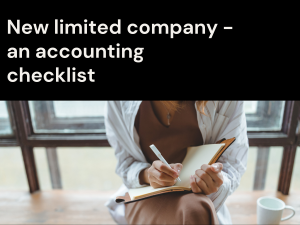An overview of the pension rules
Pensions are an extremely tax effective way of growing retirement savings. When a limited company Director contributes into their personal pension scheme there will be tax relief on the income going in. Then, once inside the pension pot, the savings will grow tax free. In the future when the Director retires and starts drawing their pension it will be subject to income tax – however, by then the Director may have fewer other sources of income, meaning it is subject to a lower rate of tax than it would have been when originally contributed.
Like all things in tax, there are a number of rates and allowances to be aware of when it comes to Director pension contributions.
Key rates and allowances
Currently, an individual is able to contribute up to £40,000 each year to their pension tax free – this is known as the annual allowance. However, that’s the very maximum that can be contributed and receive full tax relief. The actual allowance usually depends on an individual’s relevant earnings.
Relevant earnings are primarily made up of salary/employment income or self-employed earnings. Crucially, dividend income does not form part of relevant earnings. So, if a Director has a salary of £40,000 and no other income their relevant earnings would be £40,000. But for a Director who takes a tax efficient salary of £12,500 and Dividends of £27,500 their relevant earnings would be only £12,500. That may give some Directors cause for alarm, as they may want to contribute more than this to their pensions, however, thankfully there is a way around this, read below to find out more.
Director pension contributions made by employer
Employer’s can make a direct contribution to a Director or employees pension scheme of any amount. This will receive the full tax relief up to the annual allowance of £40,000. So, where an employer makes the contribution direct, the relevant earnings do not usually matter. For Directors on a low, tax efficient salary this is hugely relevant as it enables employer contributions of up to £40,000 while still benefiting from a tax efficient salary.
A few finer details to note include:
- For individuals with no relevant earnings, there is a minimum allowance of £3,600 each year.
- Pension contributions greater than the Director’s relevant allowance will be subject to an income tax charge.
- Finally, for those with higher incomes in excess of £150K you should seek professional advice, as there are additional restrictions to be wary of which we’ve not discussed here.
Why should the company make a direct pension contribution?
We’ve already seen that for Directors on low salaries the only way to receive full tax relief may be for the company (employer) to make a direct pension contribution. The good news is, that this is usually the best option anyway, as we’ll see below.
A Director has a salary of £45,000 and decides to contribute £15,000 to their pension scheme. If the company contributes the £15,000 directly, what’s the overall tax impact?
Well, the £15,000 contribution is deductible for the company, generating a corporation tax saving of £2,850 (£15,000 X 19%). The net cost to the company of making a £15,000 contribution is therefore £12,150.
Let’s keep this net cost in mind, and consider the alternative, where the Director contributes the money to the pension.
Director makes the pension contribution personally
Sticking with the example above, for the Director to make a pension contribution of £15,000 the company must pay them £17,647. The company will suffer employer’s national insurance of £2,435 giving a total deductible expense of £20,082 (£17,647 + £2,435). That expense gives rise to a corporation tax deduction of £3,816 at 19%, meaning the net cost is £16,266.
Meanwhile, the Director has now received the £17,647 which was subject to income tax and employee national insurance totalling £5,647. This gives the Director £12,000 which they can contribute to their pension scheme. When contributed, basic rate tax relief is automatically provided by the pension provider totalling £3,000 bringing the total pension contribution to £15,000.
What is clear in this example is that the net cost is £1,266 MORE than where the company makes a direct pension contribution.
Want to contribute more than £40,000?
Well, the first thing to say, is get some proper advice and speak to a financial advisor but in principle this may be possible. That’s because you can look back to the previous three tax years and utilise any unused annual allowance, meaning you could make a contribution of £160,000 and receive full relief (£40,000 for current tax year and 3 x £40,000 for previous three tax years). You can calculate your available allowance using the HMRC calculator. The lookback does require that you were a member of a registered pension scheme in each of those previous years.
Summing up
In short, if you’re a business owner and Director wishing to increase your pension contributions then you’re likely to be best off making these direct from the company to your personal pension. As always, individual circumstances can differ so if you want to check the facts for you and understand how you can reduce your tax bill then get in touch.






